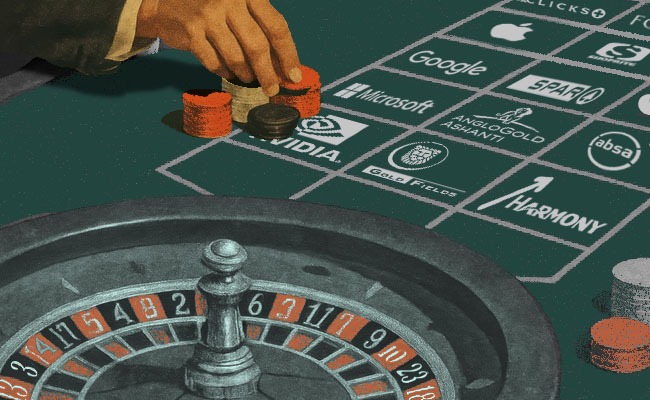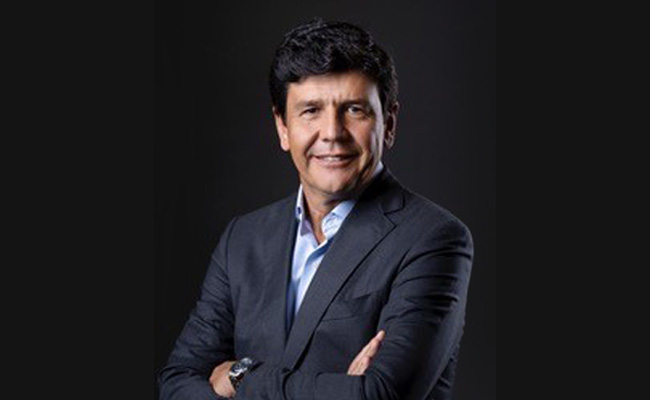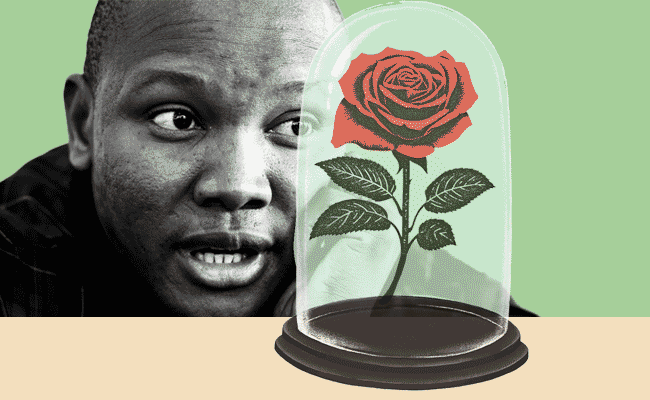Some of the most solid investing advice I have received is to invest in something you like; something you trust and use in your daily life.
But how is someone meant to do that, when a share in their favourite bank costs almost R4,000? Or R1,600 for one piece of the e-hailing service they use daily. Or close to R5,000 a pop for the brand that makes the smartphone glued to their hand.
No wonder investing sounds like a rich man’s game.
Charles Savage, though, knew people would want to invest in the brands they knew and loved, and not having enough money to do so shouldn’t be a hurdle.
So the EasyEquities CEO went looking for a solution. The answer was fractional shares. Eleven years later, the trading platform is thriving like never before, and it has changed the investment game, for good.
Yet fractional shares – a portion of a single stock – have actually been around for more than 100 years. They originated on the New York Stock Exchange after corporate actions often resulted in fractions of shares being created out of stock splits.
For a long time, their lack of voting rights made fractional shares an unpopular choice, and many institutional stock exchanges still do not trade in them. But with the rise and rise of digital stockbrokers, they have become an invaluable financial tool for the small-time investor.
The most striking example of this is in South Korea. Youngsters, ever the fast adaptors, are particularly keen to put their savings to work via investing – perhaps because a lull in the job market has made it hard for them to buy property or support a family.
A 2021 survey found that eight in 10 young South Koreans invest in stocks, cryptocurrencies or other assets, most with the motive to eventually buy a home. And they start young: nearly 8% of all shareholders in South Korea’s Samsung Electronics are teenagers.
It isn’t just fractions of equities or exchange traded funds that are booming; South Korean digital trading companies allow you to buy fractions of almost anything.
The market has been adventurously creative in its offerings; one massively popular platform is Musicow, which allows users to buy fractional shares of song royalties, hoping to invest in the next chart-topping hit.
The platform TESSA trades in fractions of blue-chip artworks, including major pieces by artists like Banksy. For as little as 1,000 won (about R12), investors can earn back a small return when the painting they’ve invested in is rented to a gallery or auctioned off.
Even more ingenious, on Bancow users invest in the beef industry by buying fractional shares of calves; when their animal is sold, owners split the profit with the farmer who reared it, as well as other investors.
Now, American rapper Jay-Z’s entertainment corporation, Roc Nation, is set to enter the emerging song royalty trading market via a partnership with Musicow this year, which will introduce a whole new audience to this sort of micro-investing.
More collaborations like this are sure to come and digital trading is booming, mostly driven by young retail investors who are actively engaging with the market, wanting more options out of it.
EasyEquities saw this need in the local market when it became the first to digitally enable fractional shares via its app. And indeed, maybe even more so than young South Koreans, young South Africans are keen to begin investing, perhaps also as an alternative to our dispiriting job market.
Savage says data shows that the average EasyEquities user is a 32-year-old Black South African. It also shows that the largest cohort of customers the company acquires every year are 27 years old. “A decade ago, the average age of an investor starting their journey would have been 35,” says Savage.
On average, users are managing R40,000 and tend to split their investments equally between local and offshore stocks.
“They don’t discriminate between large cap, small cap, or share price; it really is about the investment themes that have captured their attention, and I can tell you today that is tech stocks.”
He says EasyEquities’ most invaluable tool has been its fractional shares model, which has completely altered its platform. And all it was about, really, was looking at investments through the eyes of the investor.
“We were technically trained to think about the market in a way that equalled numbers of shares, p:e [price-earnings] ratios, all of this complexity, and we never really thought about making it easier for the consumer to engage in.”
It has certainly served the company well; when it comes to retail investors on the JSE, at 150,000 investors, Purple Group (EasyEquities’ parent company) has the second-largest retail shareholder base, trailing just behind Sasol.
Lowering the ladder
In South Korea, the government has been so thankful for the work that fractional shares companies are doing for the market that it’s helping to grow the industry.
The Finance Services Commission, the country’s top financial regulator, announced in September that it would start accepting applications from firms seeking licences to operate fractional asset trading platforms – AKA, exchanges.
The finance ministry has also ruled that profits generated from fractional shares won’t be subject to dividend or capital gains taxes.
In fact, many countries grant these sorts of tax benefits to their retail investors, with the understanding this pool of investors is invaluable.
In Sweden, equity investing is like a national sport. The government has fanned this flame purposefully, and it has been marvellously successful – the country has the largest IPO market in Europe, and the fifth biggest in the world.
This is because anyone with a bank account can trade in Sweden, leading to almost a quarter of all Swedes owning shares in publicly listed companies. Swedish households also invest more than half of their savings in stocks, more than twice the average in Europe, according to a 2025 report by the European Savings Institute.
As such, companies are falling over themselves to get onto the Nasdaq Stockholm, and Swedish-founded companies have no interest in moving elsewhere; the established support base they have in their retail investors is more than enough.
Australia has followed a similar path, supporting its small-time investors to build up its massively successful exchange.
“Australia has got the highest investment rate per capita – at one stage it was 44% of Australians, and in South Africa today it’s something like 5% or 6%,” Savage notes.
The catalyst for this, he says, was when Australia privatised its government assets, particularly its telecommunications company, Telstra. The government sold off shares of Telstra to the public at a reasonable price. It was sold off in three stages, with nearly 2-million Australians participating, many getting a taste of the stock market for the first time.
Experts looking at the South African market think it’s time we caught on to this trend. Paul Miller, MD of AmaranthCX, notes that markets that neglect their retail investors are crumbling. He points to how London’s Alternative Investments Market (AIM) has been struggling; delistings, not listings, have been the trend.
“If you want to participate in the AIM market, you’ve got to qualify as a sophisticated investor first, which generally involves some sort of threshold like salary or assets,” he explains. As of 2024, government regulation says your salary must be “at least” £100,000 to qualify.
Even if in South Africa this is not legally the case, the market here isn’t exactly welcoming to small-time investors. Unlike Sweden or Australia, retail investors get handed every single tax in the book. “You get capital gains on any trade you’ve held for long enough, and if you haven’t held it for long enough, you get taxed on the benefits as income,” says Miller.
Because of the myriad benefits that come with investing via an institution in South Africa, Miller explains that “the exact same portfolio, that has exactly the same trades, [will] get a higher return if it’s traded by an institutional investor in an investment scheme than if it’s a private share portfolio”.
And how well has this served our market so far? In the end, Miller says it comes down to the fact that “people who need capital don’t play any role in shaping the capital market”.
In an institutionalised market, small-cap IPOs keen to enter the scene will never get the investment they need, and retail investors will battle to get an edge.
Tools like fractional shares, however, mean these gaps can successfully be bridged. As more young investors find their confidence, the market may start to see more ladders coming down, than walls going up.
This story was produced in partnership with Stanlib.
Top image: Rawpixel/Currency collage.
Sign up to Currency’s weekly newsletters to receive your own bulletin of weekday news and weekend treats. Register here.













